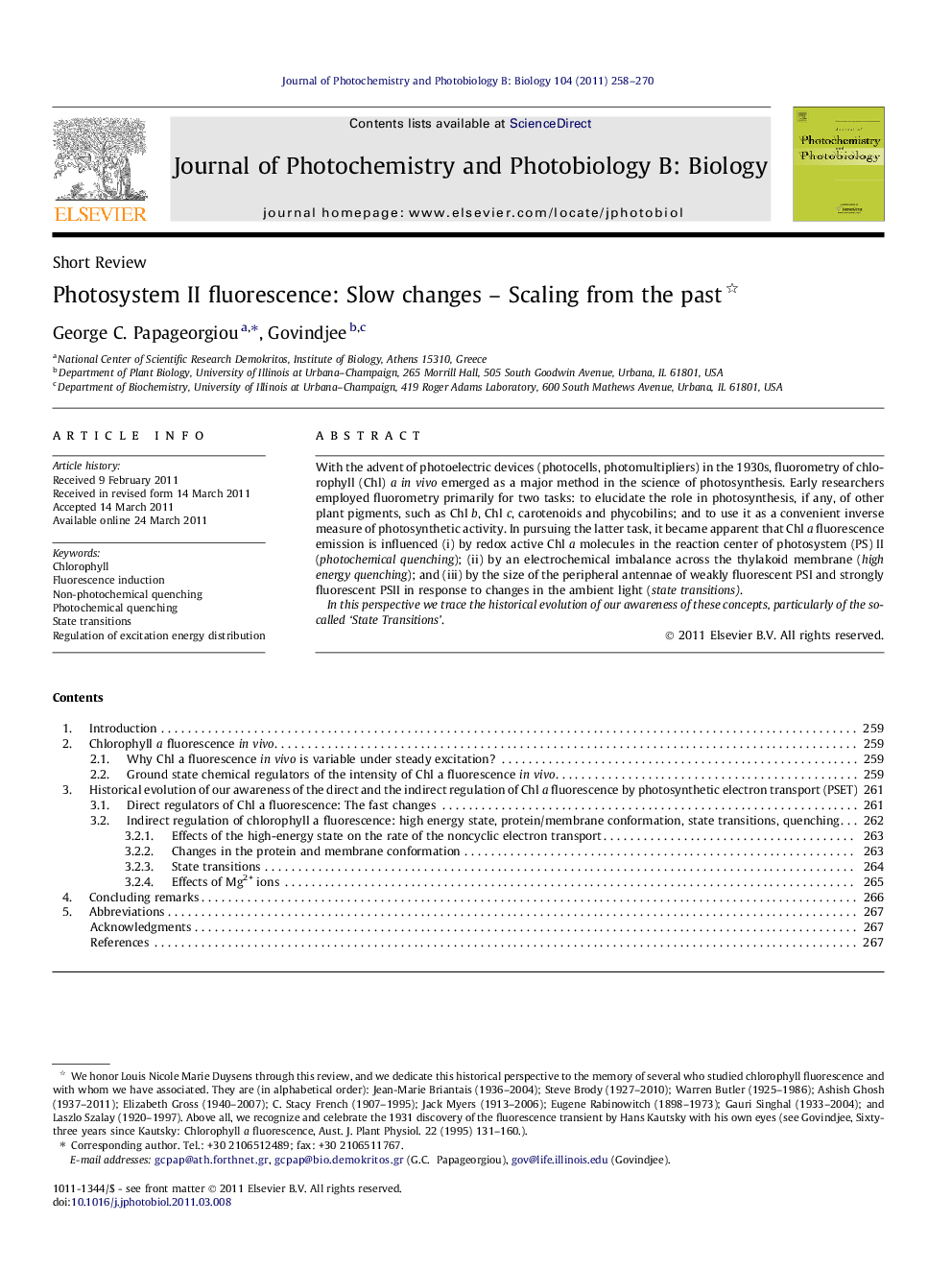| Article ID | Journal | Published Year | Pages | File Type |
|---|---|---|---|---|
| 29631 | Journal of Photochemistry and Photobiology B: Biology | 2011 | 13 Pages |
With the advent of photoelectric devices (photocells, photomultipliers) in the 1930s, fluorometry of chlorophyll (Chl) a in vivo emerged as a major method in the science of photosynthesis. Early researchers employed fluorometry primarily for two tasks: to elucidate the role in photosynthesis, if any, of other plant pigments, such as Chl b, Chl c, carotenoids and phycobilins; and to use it as a convenient inverse measure of photosynthetic activity. In pursuing the latter task, it became apparent that Chl a fluorescence emission is influenced (i) by redox active Chl a molecules in the reaction center of photosystem (PS) II (photochemical quenching); (ii) by an electrochemical imbalance across the thylakoid membrane (high energy quenching); and (iii) by the size of the peripheral antennae of weakly fluorescent PSI and strongly fluorescent PSII in response to changes in the ambient light (state transitions).In this perspective we trace the historical evolution of our awareness of these concepts, particularly of the so-called ‘State Transitions’.
► Evolution of concepts for chlorophyll a fluorescence since photoelectric methods. ► History of the discovery of ‘state changes’ in photosynthesis. ► Direct/indirect relation of chlorophyll a fluorescence to electron transport. ► Chlorophyll a fluorescence monitors energy distribution to the two photosystems. ► Quenching/non-quenching processes as modifiers of chlorophyll a fluorescence in vivo.
